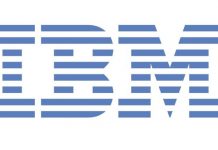Blockchain has sparked a new wave of innovation in financial services. And, it’s easy to see why. Consensus mechanisms, which provide the technology infrastructure for blockchain and other continuously evolving distributed ledger technologies, hold tremendous potential for financial services. They offer the potential to execute transactions in discreet, efficient, and highly cost effective new ways than the existing centralized network in financial services. As innovation accelerates, proponents are eagerly seeking solutions that may work within the current regulatory framework for financial services. As you’ll discover from KPMG’s new whitepaper, it’s an opportune time to think through how distributed ledger technologies can be effectively and efficiently used to overcome previous challenges and seize a host of potential new opportunities for the future.
Highlights
- Explores the past journey, present state and broad potential opportunities of distributed ledger technologies in the future
- Includes relevant insights from interviews of more than 20 creators and
corporate users of blockchains and other distributed ledgers - Reviews how various distributed ledger consensus mechanisms continue to evolve and are currently being tested and, in some cases, implemented.
- Explores the question, “Is blockchain right for your organization?”
Consensus: The immutable agreement for the internet of value
Certainly, building consensus is not a new concept. It’s a way for a diverse group to make decisions without conflict. And within computer science, consensus has become the backbone of blockchain and other distributed ledger technologies. In distributed ledgers, a consensus mechanism is the way in which a majority (or in some mechanisms, all) network members agree on the value of a piece of data or a proposed transaction, which then updates the ledger. Consensus algorithms allow connected machines towork together as a group that can even survive if some of its members fail. This tolerance of failure is another big advantage of blockchains and distributed ledgers, which have a kind of redundancy built in.Many are looking closely at blockchains and other distributed ledger technologies for their potential to execute transactions in a secure, decentralized manner based on consensus. Entrepreneurs and companies, including some of the world’s biggest banks and technology firms, are investing massive amounts of money, talent and resources to explore and develop this technology for a wide range of potential applications. Despite being a highly regulated industry, many within the financial services community foresee real potential promise in distributed ledger technology. Therefore, financial services decision makers need to stay on top of the evolving consensus mechanism landscape. The KPMG paper aims to provide relevant questions to ask when deciding on whether this technology is right for an organization, and if so, what kind, and how it might best be implemented.
Read more of KPMG’s whitepaper on “Consensus: Immutable agreement for Internet of Value”.










